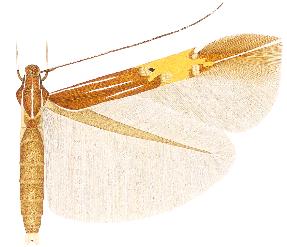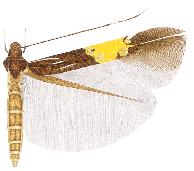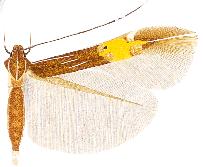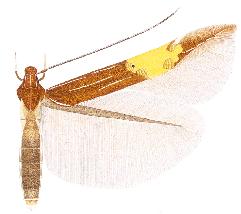
Grammodes stolida, the geometrician, is a moth of the family Erebidae. The species was first described by Johan Christian Fabricius in 1775. It is found in Africa, southern Europe, most of Asia and Australia. It migrates to central and northern Europe as far north as England, Denmark and Finland.

Cosmopterix chisosensis is a moth of the family Cosmopterigidae. It is known from Argentina and the United States.

Cosmopterix dapifera is a moth of the family Cosmopterigidae. It is known from the United States, Brazil (Bahia) and Cuba.

Cosmopterix delicatella is a moth of the family Cosmopterigidae. It is known from North Carolina, United States, but is possibly more widespread.

Cosmopterix diaphora is a moth of the family Cosmopterigidae. It is known from the Federal District of Brazil and the states of Guerrero and Veracruz in Mexico.

Cosmopterix ebriola is a moth of the family Cosmopterigidae. It is known from the United States and the Cayman Islands.

Cosmopterix hermippe is a moth of the family Cosmopterigidae. It is known from the Federal District of Brazil.

Cosmopterix mneme is a moth of the family Cosmopterigidae. It is known from Bahia, Brazil.

Cosmopterix pimmaarteni is a moth of the family Cosmopterigidae. It is known from the Federal District of Brazil.

Cosmopterix scirpicola is a moth of the family Cosmopterigidae. It is known from the United States, where found from Maryland and eastern Wyoming to Florida, south-western Louisiana and California. It has also been recorded from Alabama.

Pebobs elara is a moth of the family Cosmopterigidae. It is known from Cuba and Jamaica.
Helcystogramma bicuneum is a moth in the family Gelechiidae. It was described by Edward Meyrick in 1911. It is known from north-eastern India and China.
Ardozyga sarisias is a species of moth in the family Gelechiidae. It was described by Edward Meyrick in 1904. It is found in Australia, where it has been recorded from southern Queensland.
Antaeotricha trichonota is a species of moth of the family Depressariidae. It is found in Brazil and Paraguay.
Thudaca calliphrontis is a moth in the family Depressariidae. It was described by Edward Meyrick in 1893. It is found in Australia, where it has been recorded from South Australia.
Thudaca campylota is a moth in the family Depressariidae. It was described by Edward Meyrick in 1893. It is found in Australia, where it has been recorded from Western Australia.
Thudaca crypsidesma is a moth in the family Depressariidae. It was described by Edward Meyrick in 1893. It is found in Australia, where it has been recorded from South Australia, Victoria, Tasmania and Western Australia.

Thudaca heterastis is a moth in the family Depressariidae. It was described by Edward Meyrick in 1893. It is found in Australia, where it has been recorded from Western Australia.
Thudaca orthodroma is a moth in the family Depressariidae. It was described by Edward Meyrick in 1893. It is found in Australia, where it has been recorded from Western Australia.
Thudaca circumdatella is a moth in the family Depressariidae. It was described by Francis Walker in 1865. It is found in Australia, where it has been recorded from New South Wales.


